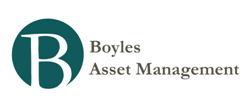Hussman Weekly Market Comment: Are Corporate Balance Sheets Really the Strongest in History?
It is freely accepted by investors as fact that U.S. corporate balance sheets are the stronger than ever before in history. This view is largely driven by the significant amount of cash (checking deposits, savings deposits, money market funds, commercial paper holdings) on corporate balance sheets. Our difficulty with this view is that no single line item on a balance sheet is a sufficient indication of "strength." Most useful measures are derived from ratios at the very least, and ideally calculations across a variety of dimensions.
The best line item on corporate balance sheets today is typically "Cash and Equivalents." But while the amount of cash and cash-equivalents on U.S. (nonfinancial) corporate balance sheets has increased significantly, particularly relative to the cash-strapped lows of 2009, corporate cash is certainly nowhere near historical highs relative to debt. As a side note, probably the dumbest use of balance sheet data that we hear from time-to-time is when analysts talk about the P/E multiple of a stock "after you back out the cash," as if the cash line item can meaningfully be subtracted from the market cap of the equity. Really? If a company issues a billion dollars of debt, and then holds the proceeds in cash, does that suddenly make the stock "cheaper" because we can now back out that cash from the company's market cap? Um, no.
While cash holdings are relatively high compared with total assets and net worth, even those figures are in the range of 5-10%, only about 3 percentage points above historical norms. Cash levels are "high" in the sense of being a larger percentage of total assets than normal, but the "excess" cash amounts to roughly $700 billion, versus total assets of non-financial corporations of about $28.6 trillion. The excess is fairly second-order from the standpoint of overall balance sheet "health."
The best that can be said is that corporations are fairly liquid here, but this is a much different statement than saying that corporate balance sheets have "never been healthier in history." In evaluating overall balance-sheet health, it is important to consider the overall debt burden of corporations.
As the following chart shows (based on Federal Reserve Flow of Funds data), the debt burden of U.S. corporations is near all-time highs, having retreated only modestly since 2009. Debt burdens are elevated regardless of whether they are measured against total assets or net worth. Certainly, corporations are presently benefiting from very low interest rates on corporate debt, which substantially reduces the servicing burden of these obligations. But the combination of high debt levels and low servicing burdens does create a potential risk to corporate health in the event that yields rise in future years. Overall, the picture is fairly stable at present thanks to low yields and high levels of cash-equivalents, but it is important for investors to keep in mind that cash can burn fairly quickly during economic downturns, and debt is not spread evenly across corporations.
The bottom line is that at an aggregate level, corporate balance sheets look reasonable, but are certainly not "stronger than they have ever been in history." Cash levels are elevated, but this is at best a second-order factor (with excess cash representing only a few percent of total assets), while debt remains near record levels relative to total assets and net worth. In any event, balance sheet risks should be evaluated on a business-by-business level, rather than accepting the blanket notion that cash levels are so high that nobody needs to worry about corporate credit risk.
- Graham And Dodd Quote
From Security Analysis: When in his capacity as investor or speculator the business man elects to pay no attention whatever to corporate balance sheets, he is placing himself at a serious disadvantage in several different respects: In the first place,...
- Hussman Weekly Market Comment: Topping Patterns And The Proper Cause For Optimism
Link to: Topping Patterns and the Proper Cause for OptimismNotes to the FOMC The following are a few observations regarding Dr. Yellen’s testimony to Congress. The objective is to broaden the discourse with alternative views and evidence, not to disparage...
- Hussman Weekly Market Comment: Charles Plosser And The 50% Contraction In The Fed's Balance Sheet
Especially good/important commentary from John Hussman this week.In my view, this is a major problem for the Fed, but is the inevitable result of pushing monetary policy to what I've called its "unstable limits." High levels of monetary base, per...
- Debt Is Almost Gone
Earlier this month I charged almost the rest of the balance of our high interest debt off. This month I charged a total of $9.766.39 to my credit cards to pay off our debt. I left a little bit on for next payment so they take the full amount with the...
- Can A Total Shareholder Yield Etf Work?
A rare mid-week post, but earlier today I read an interesting article on Forbes about the Cambria Shareholder Yield ETF (SYLD), which was based on an interview with the Cambria CIO. So I decided to dig into the story a little this evening. The SYLD...

